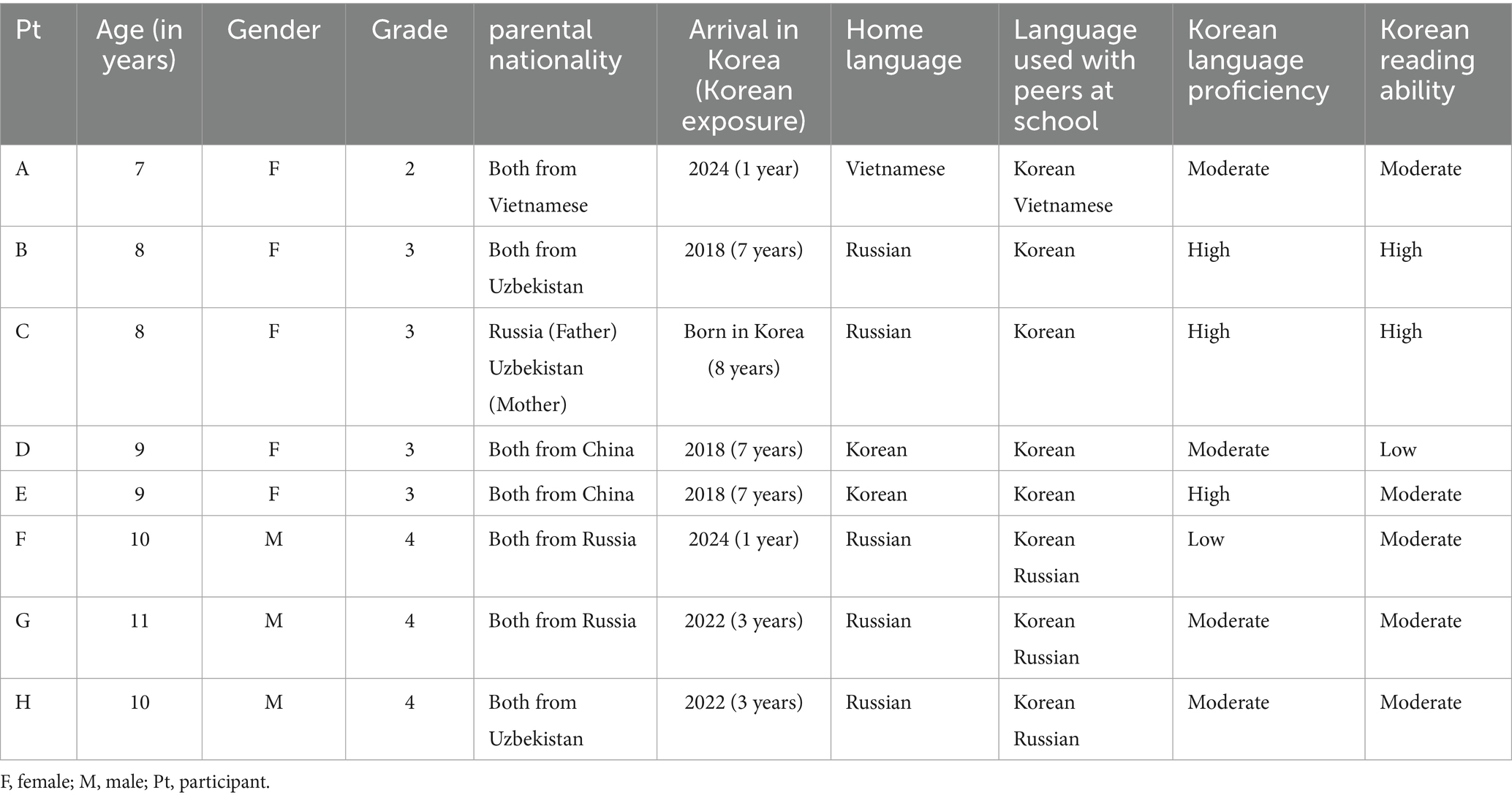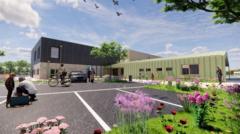Report on the Candidacy of David Stokes for School Committee
Motivation and Commitment to Sustainable Development Goals
David Stokes has outlined his platform for the School Committee, grounding his objectives in a firm commitment to public education as a cornerstone for sustainable development. His motivation stems from a desire to navigate future challenges, including economic uncertainty and diminishing federal support for education. Mr. Stokes’s platform emphasizes several key United Nations Sustainable Development Goals (SDGs).
- SDG 4 (Quality Education): He advocates for an educational system that serves as a “great equalizer,” ensuring inclusive and equitable quality education for all students. This includes fostering creativity and preparing students for diverse post-secondary pathways, not limited to college.
- SDG 10 (Reduced Inequalities): A central theme of his candidacy is combating bias and removing barriers for students and families, directly aligning with the goal of reducing inequality within and among communities.
- SDG 3 (Good Health and Well-being): Mr. Stokes stresses the importance of supporting the mental and physical health of students as a prerequisite for effective learning and overall well-being.
Candidate Qualifications and Background
Mr. Stokes brings extensive experience in public service and education governance to his candidacy. His qualifications are rooted in long-term community involvement and direct participation in school administration.
- Previous School Committee Service (2020-2023): Served a full term, gaining significant experience during the COVID-19 pandemic.
- Subcommittee Leadership: Chaired the Buildings and Grounds Subcommittee and was a member of the Policy and the Budget & Finance Subcommittees.
- Advocacy for Vocational Training (SDG 8): Chaired an ad hoc committee to expand Career and Technical Education (CTE) opportunities, promoting skills for decent work and economic growth.
- Long-Term Engagement: Served for 12 years on the Site Councils for Lowell Elementary, Middle, and High Schools.
- Professional Background: Holds a Secondary School English teaching certificate and served as an Adjunct Faculty member at Boston University’s Questrom School of Business.
Platform on Key Educational Issues
Fostering an Inclusive and Welcoming Environment (SDG 4, SDG 10)
To ensure the district serves all students equitably, Mr. Stokes proposes a focus on respect, understanding, and cultural sensitivity. His strategy is designed to reduce inequalities and guarantee an inclusive educational experience.
- Individualized Approach: Advocates for meeting each student and family “where they are” to honor their unique journeys.
- Building Trust: Acknowledges the need to address student feedback indicating a lack of trusted adults in school buildings and proposes this as a key area for improvement.
- Community Action: Highlights his work to reorganize the Watertown Anti-Bias Coalition, which aims to “promote equity and inclusion through transformative conversations, education, and activism.”
Sustainable Infrastructure and School Facilities (SDG 7, SDG 11)
Regarding the Watertown Middle School project, Mr. Stokes adopts a pragmatic approach focused on fiscal responsibility and long-term sustainability, in line with goals for sustainable cities and communities.
- Feasibility Concerns: While initially supportive of a full rebuild, he now expresses doubts due to high cost estimates but remains hopeful that a path forward can be found.
- Immediate Priorities: Recommends proceeding with critical upgrades, including roof replacement, fire alarm system updates, and modern safety features.
- Green Initiatives: Proposes investigating opportunities for energy efficiencies and alternative energy sources, such as solar power, to reduce operational costs and promote affordable and clean energy (SDG 7).
Policy on Electronic Devices and Student Well-being (SDG 3, SDG 4)
Mr. Stokes supports the proposed “bell-to-bell” ban on personal electronic devices to enhance the quality of education and protect student well-being.
- Support for Policy: Cites mounting research that devices are distracting and harmful to student learning.
- Alignment with State Regulations: Notes the likelihood of similar statewide regulations in the near future.
- Ensuring Equity (SDG 10): Emphasizes the need for exceptions for students who rely on electronic devices as instrumental tools for navigating educational challenges, ensuring the policy does not create barriers.
Programmatic Priorities: Career and Technical Education (SDG 4, SDG 8)
If budget opportunities arise, Mr. Stokes’s top priority is the expansion of Career and Technical Education (CTE) to provide students with skills for productive employment and decent work.
- Focus on “Hard Trades”: He would choose to add a CTE pathway in fields such as plumbing, electrical, or automotive repair.
- Addressing a Systemic Gap: Notes that Watertown students have limited access to regional technical high schools and that current CTE pathways do not include these trades.
- Economic Rationale: Points to a potential future shortage of skilled trade workers as a reason to invest in these programs, contributing to sustainable economic growth (SDG 8).
Response to Voter Concerns
Addressing Community Needs for Childcare (SDG 11)
Mr. Stokes identifies the lack of sufficient after-school childcare as the most significant issue for elementary and preschool families. His proposed solution aligns with the goal of creating safe, resilient, and sustainable community infrastructure.
- Primary Voter Issue: Acknowledges the struggle for families who do not secure a spot in the WPS Extended Day lottery.
- Identified Barriers: Notes that transportation remains a major obstacle even with emerging private and non-profit solutions.
- Proposed City-Level Solution: Suggests the City of Watertown should explore purchasing or building a dedicated facility to provide an overflow solution for families in need of reliable childcare.
Analysis of Sustainable Development Goals in the Article
1. Which SDGs are addressed or connected to the issues highlighted in the article?
-
SDG 4: Quality Education
The article is fundamentally centered on improving the quality of public education in Watertown. It discusses various facets, including curriculum (Career and Technical Education), student support, creating inclusive learning environments, and upgrading school facilities to be safe and effective.
-
SDG 3: Good Health and Well-Being
The candidate explicitly mentions the importance of “supporting mental and physical health” within schools as a key component of ensuring student success, directly linking the educational environment to student well-being.
-
SDG 8: Decent Work and Economic Growth
The article places significant emphasis on preparing students for their “life journey after high school,” particularly for those not immediately pursuing college. The push for Career and Technical Education (CTE) in “hard trades” like plumbing and electrical work is aimed at equipping students with skills for decent employment and addressing future labor shortages.
-
SDG 10: Reduced Inequalities
A core theme is making education a “great equalizer.” This is addressed through commitments to “combatting bias,” “removing barriers for students and families with challenges,” and the work of the Watertown Anti-Bias Coalition to “promote equity and inclusion” for diverse cultures and needs.
-
SDG 11: Sustainable Cities and Communities
The discussion on renovating or rebuilding Watertown Middle School touches upon sustainable infrastructure. The candidate mentions upgrading safety features, improving the school grounds, and considering “energy efficiencies and alternative sources (like solar)” to make the building more sustainable and cost-effective.
Specific SDG Targets Identified
SDG 4: Quality Education
- Target 4.4: By 2030, substantially increase the number of youth and adults who have relevant skills, including technical and vocational skills, for employment, decent jobs and entrepreneurship.
- This is directly addressed by the candidate’s strong advocacy for expanding Career and Technical Education (CTE) pathways, especially in “hard trades,” to provide students with practical job skills.
- Target 4.5: By 2030, eliminate gender disparities in education and ensure equal access to all levels of education and vocational training for the vulnerable, including persons with disabilities, indigenous peoples and children in vulnerable situations.
- The article supports this target through the stated goal of “combatting bias, … removing barriers for students and families with challenges,” and the work of the Anti-Bias Coalition to support diverse student needs.
- Target 4.a: Build and upgrade education facilities that are child, disability and gender sensitive and provide safe, non-violent, inclusive and effective learning environments for all.
- This is evident in the detailed discussion about the Watertown Middle School project, which includes plans to upgrade the fire alarm system, add modern safety features, and make general improvements to create a school to “be proud of.”
SDG 3: Good Health and Well-Being
- Target 3.4: By 2030, reduce by one third premature mortality from non-communicable diseases through prevention and treatment and promote mental health and well-being.
- The candidate’s commitment to “supporting mental and physical health” and addressing the issue of students not having a trusted adult in their school directly contributes to promoting mental health and well-being within the student population.
SDG 8: Decent Work and Economic Growth
- Target 8.6: By 2020, substantially reduce the proportion of youth not in employment, education or training.
- The focus on creating CTE pathways for students “who might not choose college right after high school” is a direct strategy to reduce the number of young people who are not in education, employment, or training (NEET) by providing alternative routes to skilled employment.
SDG 10: Reduced Inequalities
- Target 10.2: By 2030, empower and promote the social, economic and political inclusion of all, irrespective of age, sex, disability, race, ethnicity, origin, religion or economic or other status.
- The article reflects this target through the candidate’s philosophy to “meet each student (and their family) where they are,” be “sensitive to cultural needs,” and the mission of the Anti-Bias Coalition to “promote equity and inclusion.”
SDG 11: Sustainable Cities and Communities
- Target 11.3: By 2030, enhance inclusive and sustainable urbanization and capacity for participatory, integrated and sustainable human settlement planning and management in all countries.
- The candidate’s desire to “investigate with the Middle School community other possible, low(er)-cost improvements” and consider “energy efficiencies and alternative sources (like solar)” for the school building reflects a commitment to sustainable and community-involved infrastructure planning.
Indicators for Measuring Progress
The article implies several specific, localized indicators that can be used to measure progress towards the identified targets:
-
Indicator for Student Support and Well-being (SDG 3.4, SDG 4.5)
The statistic that “less than half of our students still report that they do not have an adult in their school building that they can trust.” Progress could be measured by an increase in this percentage over time through school surveys.
-
Indicator for Vocational Training Access (SDG 4.4, SDG 8.6)
The number of available CTE certificate pathways. The article states there will be “5 three-year CTE certificate pathways” but none in a “hard trade.” An increase in the number and variety of these pathways would be a direct measure of progress.
-
Indicator for School Infrastructure and Sustainability (SDG 4.a, SDG 11.3)
The physical condition of the Middle School, specifically the need to replace the roof and upgrade the fire alarm system. Furthermore, the implementation of energy-efficient solutions, such as installing solar panels, would serve as a clear indicator of progress towards sustainability.
-
Indicator for Community Needs (SDG 11)
The availability of after-school childcare slots. The article notes that families “struggle most with childcare after the school day ends,” pointing to the number of available slots in Extended Day programs versus the number of families in need as a key indicator of community support infrastructure.
Summary Table of SDGs, Targets, and Indicators
| SDGs | Targets | Indicators Identified in the Article |
|---|---|---|
| SDG 4: Quality Education |
|
|
| SDG 3: Good Health and Well-Being |
|
|
| SDG 8: Decent Work and Economic Growth |
|
|
| SDG 10: Reduced Inequalities |
|
|
| SDG 11: Sustainable Cities and Communities |
|
|
Source: watertownmanews.com







